Sedimentary rocks
Type of resources
Topics
Keywords
Contact for the resource
Provided by
Years
Formats
Representation types
Update frequencies
-
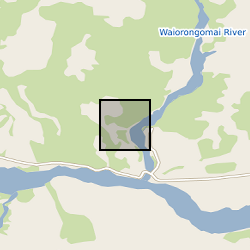
These data were collected to study oxidative weathering processes in the Waiapu River catchment, New Zealand, with potential carbon release sourced from the oxidation of petrogenic organic carbon or carbonate dissolution coupled to the oxidation of sulfide minerals. There, in mudstones exposed in a highly erosive gully complex, in situ CO2 emissions were measured with drilled gas accumulation chambers following the design by Soulet et al. (2018, Biogeosciences 15, 4087-4102, https://doi.org/10.5194/bg-15-4087-2018). Temporal and spatial variability in CO2 flux can be put in context with environmental changes (e.g., temperature and hydrology). For this, CO2 release from 5 different chambers, which were installed over a transect of ~ 10 m length in a gully above a nearby streambed, was measured several times over a short study period (circa one week). In addition, the gaseous CO2 storage (partial pressure) in the shallow weathering zone was measured prior to a CO2 flux measurement. To understand the source of CO2, gas samples were collected and their stable and radioactive carbon isotope compositions determined. In this process, we identified a contaminant, which was associated with the chamber installation, that can be traced in the gas samples that were collected within 4 days following the installation. Details of the subsequent data analysis and interpretation can be found in: Roylands et al. 2022, Chemical Geology: Capturing the short-term variability of carbon dioxide emissions from sedimentary rock weathering in a remote mountainous catchment, New Zealand. This work was supported by the European Research Council (Starting Grant to Robert G. Hilton, ROC-CO2 project, grant 678779).
-
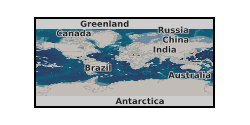
This dataset contains raw experimental high temperature and acoustic emission testing data on ‘Comiso’ limestone samples as outlined in "Castagna, A., Ougier-Simonin, A., Benson, P. M., Browning, J., Walker, R. J., Fazio, M., & Vinciguerra, S. (2018). Thermal damage and pore pressure effects of the Brittle-Ductile transition in Comiso limestone. Journal of Geophysical Research: Solid Earth, 123(9), 7644-7660.s, http://dx.doi.org/10.1029/2017JB015105". The data is provided in a .zip folder for 2 experiments that are accompanied by a README file for introduction. Files format are Microsoft Excel Worksheet (.xlsx) and data are tabulated. Each file contains the corresponding relevant sample’s details and each column of data is clearly labelled, units included. For each experiment, local time, corrected time, temperature (in degrees Celsius), acoustic emission amplitude (in decibels) and counts were recorded. Cylindrical samples of ‘Comiso’ limestone samples (Ragusa Formation; Sicily) were heat-treated to investigate the effects of thermal stressing on the limestone’s microstructure. In all tests, a controlled heating rate of 1 °C/minute was applied, keeping the specimen at the desired maximum temperature for 30 minutes to allow complete temperature equilibration followed by natural cooling (generally less than<1 °C/minute). The experiments were conducted on the Carbolite CTF12/75/700 tube furnace of the Rock and Ice Physics Laboratory of the University College of London between the 22nd and 28th February, 2016. The experiment were conducted by Drs A. Castagna and J. Browning, both responsible for the collection and interpretation of the data.
-
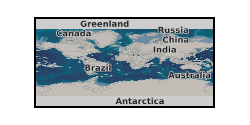
This dataset contains raw experimental triaxial testing data as outlined in "Castagna, A., Ougier‐Simonin, A., Benson, P. M., Browning, J., Walker, R. J., Fazio, M., & Vinciguerra, S. (2018). Thermal damage and pore pressure effects of the Brittle‐Ductile transition in Comiso limestone. Journal of Geophysical Research: Solid Earth, 123(9), 7644-7660.s, http://dx.doi.org/10.1029/2017JB015105". The data is provided in a .zip folder containing the files of 16 experiments that are accompanied by a README file for introduction. Files format is Microsoft Excel Worksheet (.xlsx) and data are tabulated. Each file contains the corresponding relevant sample’s details, and each column of data is clearly labelled, units included. For each experiment, time, radial and axial pumps volume displacements and pressures, top and bottom pore fluid pumps volume displacements and pressures, internal temperature, LVDT signals were recorded. Twenty right cylindrical samples of ‘Comiso’ limestone (Ragusa Formation; Sicily) were tested in triaxial compression at a range of confining pressures simulating depths of 290 m, 620 m, 1.2 km, and 2.0 km respectively, assuming an average density of the over-burden load of 2470 kg/m3. Prior to strength test, each sample was either oven dried (ca. 12 hours at 85 °C followed by cooling in a desiccator for 1 hour) or water saturated (samples in distilled water under vacuum for 24 hours). A subset of these samples has also been thermally treated at 150, 300, 450 and 600oC to induce thermal cracking prior to the mechanical testing. All tests were conducted at 10-5 s-1 axial strain rate in assumed drained conditions when relevant, and at room temperature. For saturated tests, the initial loading was applied in two steps, first by increasing Pc hydrostatically (σ1=σ2=σ3) until the desired confining pressure was reached, and then introducing pore fluid pressure, as per the functionality of the experimental set-up. The experiments were conducted by Drs A. Castagna, M. Fazio and P. Benson using the Snachez triaxial cell at the Rock Mechanics Laboratory of the University of Portsmouth. All responsible for the collection and initial interpretation of the data. Only 17 experiments are reported in this set of data; the missing 3 datasets are believed to be only available on the local computer storage of the triaxial apparatus used at that time.
-
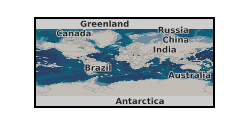
This dataset contains experimental hydrostatic testing data with ultrasonic surveys and acoustic emission data as outlined in "Panza, E., Agosta, F., Rustichelli, A., Vinciguerra, S. C., Ougier-Simonin, A., Dobbs, M., & Prosser, G. (2019). Meso-to-microscale fracture porosity in tight limestones, results of an integrated field and laboratory study. Marine and Petroleum Geology, 103, 581-595, https://doi.org/10.1016/j.marpetgeo.2019.01.043". The data is provided in a .zip folder containing 11 files, with 10 files for each mechanical tests and 1 containing all the geophysical data recorded and calculated; accompanied by a README file for introduction. Files format is Microsoft Excel Worksheet (.xlsx) and data are tabulated. Each file contains the corresponding relevant sample’s details, and each column of data is clearly labelled, units included. For each experiment, mechanical dataset recorded time, axial force, axial displacement, axial stress, confining displacement, confining pressure, axial strains A and B, circumferential extensometer, and internal temperature. Physical dataset recorded sample’s dimensions, density, compressional (P) wave arrival time and shear (S1, S2) wave arrival times; details of calculated velocities and elastic parameters are also given. Ten right cylindrical samples of limestone from the Altamura Formation sampled at Pontrelli Quarry were tested in hydrostatic compression at a range of confining pressures (Pc = σ1=σ2=σ3) from 0 to 50, or 80 MPa, at 2 MPa/min. Samples were cored either horizontal (H) or vertical (V) that is respectively sub-parallel and sub-orthogonal to bedding; the orientation is indicated in the sample’s ID. Ultrasonic velocity measurements were performed at Pc = 0, 1, 2.5, 5, 10 MPa, and then at steps of 10 MPa up to the maximum Pc value. Each sample was tested oven dried (ca. 12 hours at 40 °C followed by cooling in a desiccator for 1 hour; all prior to the hydrostatic compression). All tests were conducted at room temperature. The experiments were conducted by Dr E. Panza, M. Dobbs and Dr A. Ougier-Simonin using the MTS815 Rock Testing System in triaxial configuration in the Rock Mechanics and Physics Laboratory of the British Geological Survey. All responsible for the collection and initial interpretation of the data.
-
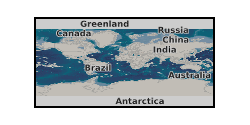
A worldwide compilation of 645 analyses of Sm and Nd concentrations, and Nd isotopes, in fine-grained continental sedimentary rocks with a range of deposition ages. These data were used in Dhuime et al. (2017, Sedimentary Geology 357, 16-32) to calculate the variation in the Nd model age of fine-grained continental sediments as a function of their age of deposition.
-

The measurements and data were obtained to study the release of carbon dioxide during the chemical weathering of sedimentary rocks, and how these CO2 fluxes were related to environmental parameters (temperature, hydrology). Weathering of sedimentary rocks can result in CO2 release from the oxidation of rock organic carbon oxidation, but also due to the oxidation of sulfide minerals, production of sulfuric acid and subsequent release of CO2 from carbonate minerals. The rock-derived carbon sources are understudied, and form an important part of the geological carbon cycle. The CO2 flux measurements were made on 5 rock chambers (H4, H6, H7, H8 and H13) installed in the Draix-Bleone Critical Zone Observatory, France, on outcrops of Jurassic marls. Measurements and data were collected from December 2016 to May 2019. Regular visits to the site (~4 per year) returned data on total CO2 flux (Total-CO2-flux.csv). This was explored as a function of temperature and ambient hydroclimate (precipitation). The datasets include the total CO2 flux measured at each visit to a chamber, and measurements of the internal chamber temperature. To determine the source of CO2 measured in the chambers, we trapped the CO2 using zeolite sieves and recovered it in the laboratory. The radiocarbon activity (reported as fraction modern, F14C) and its stable isotope composition (d13C) were measured from CO2 collected from chambers H4 and H6 over the sampling period (Radiocarbon-data.csv). These were used in a mixing analysis to partition the source of CO2 using a mixing model approach (Partitioned-CO2-fluxes.csv) as explained in full in the published paper Soulet et al., 2021, Nature Geoscience. We also measured the geochemical characteristics of the bedrocks being measured (rock-geochemical-composition.csv), including the organic carbon concentration, inorganic carbon concentration and their isotopic composition. Finally, we measured environmental variables of interest - the chamber temperature and the air temperature at the Draix-Bleone observatory (chamber-temperature.csv and Air-temperature-at-laval-le-plateau-weather-station.csv, respectively). This research was funded by a European Research Council Starting Grant to Robert Hilton (ROC-CO2 project, grant 678779) and radiocarbon and stable isotope measurements were funded by the Natural Environment Research Council (NERC), UK, (NERC Environmental Isotope Facility NEIF Radiocarbon Allocation 2074.1017) to Guillaume Soulet, Robert Hilton and Mark Garnett. Full details of data analysis and interpretation can be found in Soulet et al., 2021, Temperature control on CO2 emissions from the weathering of sedimentary rocks, Nature Geoscience
-
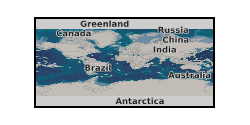
This dataset contains raw experimental direct shear testing data as presented by "Ougier-Simonin, A., Castagna, A., Walker, R. J., & Benson, P. M. (2018). Frictional and mechanical behavior of simulated, sedimentary fault gouges. In AGU Fall Meeting Abstracts (Vol. 2018, pp. T11E-0212)". The data is provided in a .zip folder containing the files of 8 experiments that are accompanied by a README file for introduction. Files format is Microsoft Excel Worksheet (.xlsx) and data are tabulated. Each file contains the corresponding relevant sample’s details, and each column of data is clearly labelled, units included. For each experiment, time, axial force, axial displacement, axial stress, confining displacement, confining pressure, internal temperature, and axial delta P were recorded. Details of calculations for shear stress and coefficient of friction are also provided. Eight gouge (rock powder) samples of Monte Salici sandstone (Numidian Flysch, Appenninic-Maghrebian Chain; Sicily), ‘Comiso’ limestone (Ragusa Formation; Sicily) and Quaternary Clays (blue-grey clay in Fiumefreddo, Sicily) were tested in direct shear using sliding holders in triaxial compression at a confining pressure of 50 MPa. After 4 mm of axial (shear) displacement at 1 micron per second, variable rates of axial displacement were applied to induce velocity steps condition and measure rate-and-state parameters. Maximum displacement: ca. 9.8mm. All tests done at room temperature. The experiments were conducted by Drs A. Castagna and A. Ougier-Simonin using the MTS815 Rock Testing System in triaxial configuration and homemade sliding holders in the Rock Mechanics and Physics Laboratory of the British Geological Survey; both responsible for the collection and initial interpretation of the data. One test presented an issue on one of the signals recorded; the data are still shared for information purposes and the corresponding set of data is clearly named to indicate this fact.
 NERC Data Catalogue Service
NERC Data Catalogue Service